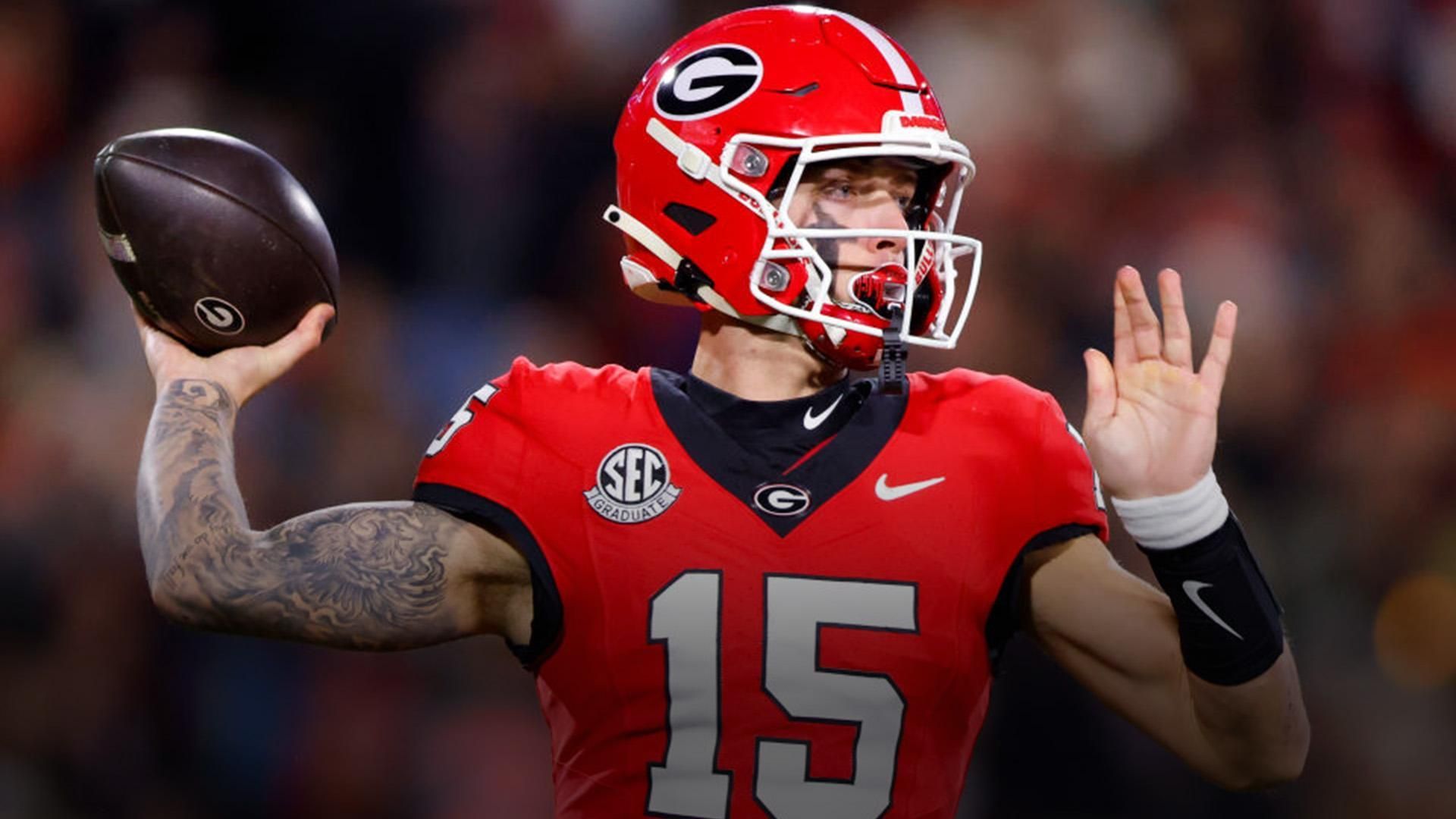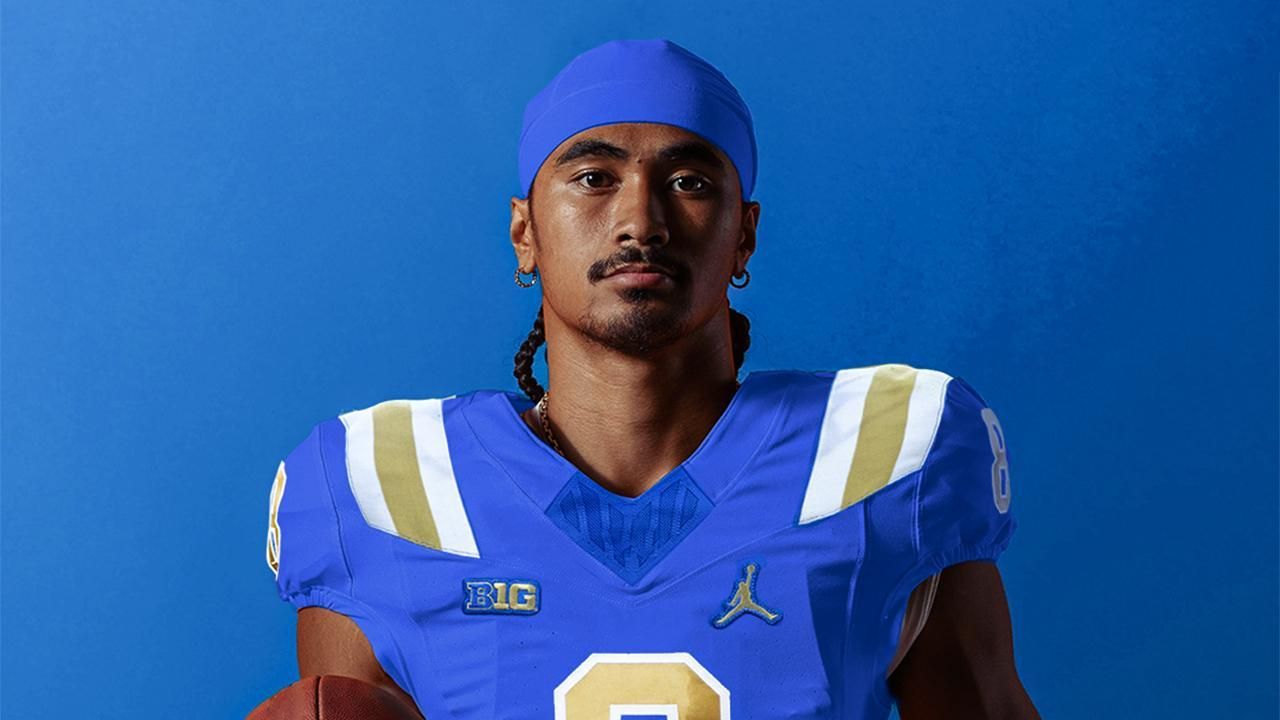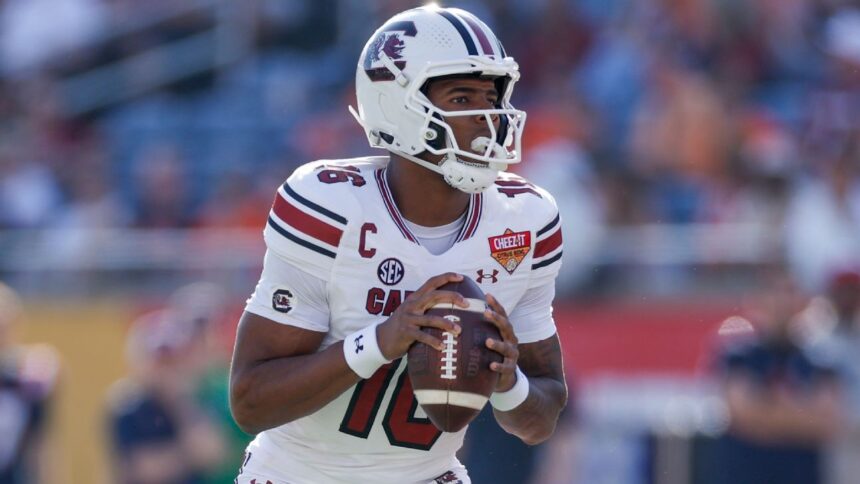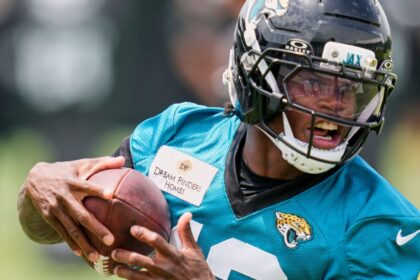Promising Field Marshals for the 2026 NFL Draft
After only two first-round selections at the quarterback position in the 2025 NFL draft, the 2026 NFL draft is expected to offer even more exciting options. Several players already stand out, including Cade Klubnik (Clemson), LaNorris Sellers (South Carolina), Drew Allar (Penn State), and Garrett Nussmeier (LSU), not to mention the promising Texas sophomore, Arch Manning.
Although Manning could stay in college until 2027, we will include him in the group of 22 eligible quarterbacks for the draft. We will also answer some questions about the NFL teams that might be interested in these quarterbacks.
Key names to consider:
Drew Allar, Penn State
Height: 6-5 | Weight: 238
Class: Senior
Strengths: Allar showed significant improvement in his development in 2024, increasing his completion percentage from 59.9% in 2023 to 66.5%. He excelled under offensive coordinator Andy Kotelnicki, throwing for 3,327 yards and 24 touchdowns, with eight interceptions. His strong arm allows him to test challenging throwing windows in intermediate areas. He also possesses enough mobility for his size, allowing him to escape defenders in the pocket.
Areas for Improvement: Although his completion percentage improved significantly, Allar’s accuracy was still inconsistent. He often places the ball on the wrong shoulder, and his throws can be too high or low on what should be easy passes. His performance against high-ranked teams has also been uneven. Scouts will be watching him closely against Oregon (September 27) and Ohio State (November 1). Penn State is the highest-ranked team in the ESPN Top 25, but they will need Allar to play better in the important games to live up to expectations.
Carson Beck, Miami
Height: 6-4 | Weight: 220
Class: Senior of sixth year
Strengths: Beck was considered a possible candidate to be the first overall pick in 2025, but had a disappointing final season at Georgia, throwing for 3,485 yards and 28 touchdowns, with 12 interceptions. He now has the opportunity to revitalize his value in Miami, which just produced the first pick in April’s draft, Cameron Ward. Beck is a rhythmic passer who plays well when he gets into an early rhythm. He gets the ball out quickly and is a true distributor who can spread the ball around the field.
Areas for improvement: Beck experiences moments of imprecision, especially when he’s not sharp at the beginning. Last year’s game against Alabama perfectly encapsulated Beck’s inconsistency, as he threw two interceptions and completed 47% of his passes in the first half. Then, he reacted with 339 passing yards and three touchdowns in the second half to lead a near comeback. It was a roller coaster in 2024, but there’s a reason why many evaluators had him as the QB1 at the beginning of last season. Miami’s offense has Air Raid principles, which should accentuate his gifts as a passer.

Cade Klubnik, Clemson
Height: 6 feet 2 inches | Weight: 210 pounds
Class: Senior
Strengths: Klubnik entered 2024 with doubts after a difficult sophomore season, but emerged as a star, finishing with 3,639 passing yards and 36 touchdown passes, with only six interceptions. He is capable of repeating his mechanics and keeping his eyes, feet, and throwing motion synchronized as he progresses. Klubnik saved his best game of the season for the first round of the College Football Playoff, throwing for 336 yards and three touchdowns against Texas. He should be poised for success in 2025, as Clemson returns its top three receivers. That’s a big reason why he was the first pick in my 2026 mock draft.
Areas for improvement: The talent scouts across the league I’ve spoken with have expressed concern about Klubnik’s arm strength and whether he can build on his 2024 success. Questions about his arm arise when he’s forced to test tight windows in underneath coverage and with his inconsistent trajectory on deep passes. Klubnik averaged just 8.56 air yards per pass attempt in 2024, ranking 58th in the FBS. He needs to be more assertive and willing to challenge coverage in intermediate and deep areas.
Sam Leavitt, Arizona State
Height: 6-2 | Weight: 210
Class: Redshirt SophomoreStrengths: Leavitt was a revelation last season after transferring from Michigan State, passing for 2,885 yards, 24 touchdowns, and 6 interceptions, while leading the Sun Devils to the Big 12 championship and the College Football Playoff. He is a calm and collected passer, whose QBR rating of 80 was the tenth-best rate in the FBS. Leavitt always seems to be in control and consistently makes the right play from the pocket. He performs at his best in the play-action game, as he can turn his back to the defense and readjust his eyes to make throws.
Areas for improvement: Leavitt only has 13 starts in his career, so the sample size is relatively small. He tends to be too bouncy in the pocket and needs to be more consistent at taking the options he has available early in progressions. He will also face a lot more pressure this season, as star running back Cam Skattebo is leaving for the NFL and the Sun Devils are no longer a sleeping team after winning the conference title. Leavitt will be counted on as the catalyst for Arizona State’s offense.Arch Manning, Texas
Height: 6-4 | Weight: 222
Class: Redshirt SophomoreStrengths: Manning has only started in two college games, throwing for 583 yards, four touchdowns, and two interceptions in those starts. He has a well-built frame, allowing him to evade defenders in the pocket and bounce off tacklers in the open field as a runner. Manning has a perfect base and a smooth delivery as a passer. He doesn’t have much experience in that department, as Texas primarily used him as a runner in 2024, but his prototypical frame and physical tools were evident on tape and give him immense potential. He will be under the tutelage of one of the best QB developers in the country, Steve Sarkisian, but Manning’s lack of experience makes it more likely that he will be in the 2027 draft class at the earliest.
Areas for Improvement: Manning only has 95 career pass attempts, so his sample size is small and more development is needed. He had a habit of sticking to his primary read for too long early on, leading to poor decision-making. He will need to improve his timing to advance through progressions and know when to move on from his first read. He could also use his mobility much more on non-designed QB runs to help string together positive plays. He will be tested on these things early, as the Longhorns begin the season at the reigning national champion Ohio State.
John Mateer, Oklahoma
Height: 6-1 | Weight: 224
Class: Redshirt JuniorStrengths: Mateer joins the Sooners after three seasons at Washington State. He broke out in 2024, finishing with 3,139 passing yards and 29 touchdowns, with only seven interceptions. He is an aggressive playmaker who has all kinds of fancy throws, allowing him to reposition his body and still get the ball out effectively. He has easy arm strength and doesn’t hesitate to make long-range throws. Mateer is a fierce competitor and an extremely effective runner on designed runs and QB runs, running for 826 yards and 15 touchdowns last season. He represents a clear upgrade for an Oklahoma offense that struggled mightily in 2024.
Areas for Improvement: Thanks to Washington State’s schedule, Mateer was able to get away with bad habits in the protection pocket that won’t work in the SEC. He tends to be a bit slow on reads, relying on his arm strength to alleviate the delay in his progressions. Over-reliance on the arm also leads him to forgo easier, shallow reads for more challenging, deep throws. He will be tested against a schedule that includes eight SEC schools and a Week 2 conference game against Michigan. If he passes with flying colors, Mateer could quickly climb draft boards.
Fernando Mendoza, Indiana
Height: 6-5 | Weight: 225
Class: Redshirt juniorStrengths: Mendoza arrives at Indiana after being the center of Cal’s offense in 2024, throwing for 3,004 passing yards and 16 touchdowns, with six interceptions. He has a quick release that helps the ball come out of his hand with a lot of zip. Mendoza is an accurate passer who puts the ball in the right place for his receivers, as demonstrated by his 5.1% incompletion percentage (best in the FBS) last season. He is effective throwing from inside or outside the offensive framework, ranking ninth in the FBS with a QBR of 91.1 on throws outside the pocket. He also excels at identifying and attacking advantageous one-on-one coverage situations.
Areas for Improvement: Mendoza’s ability to escape and his effectiveness at shooting from outside the pocket can lead to impatience and breaking down the pocket prematurely. He needs to have more patience to let concepts develop, especially now that he will be facing improved defenses in the Big Ten. But Indiana’s offense is eerily similar to the one he operated in at Cal, giving Mendoza the opportunity to be a breakout candidate in 2025.
Garrett Nussmeier, LSU
Height: 6-2 | Weight: 200
Class: Senior Year 5
Strengths: Nussmeier had ups and downs in his first season as a starter after replacing Jayden Daniels, throwing for 4,052 yards, 29 touchdowns and 12 interceptions. The son of Saints offensive coordinator Doug Nussmeier has a firm grasp of defensive structures and coverages. He has the most jaw-dropping highlight tape of any QB in the class, as he routinely delivers the ball to where his targets are supposed to be. He also has a flexible arm, allowing him to alter his arm slots while maintaining accuracy.
Areas for Improvement: Nussmeier’s confidence and daredevil mentality can sometimes be counterproductive. While he isn’t often tackled (his 2.9% tackle rate was the 12th lowest in the FBS), he can be careless with the ball, especially against better defenses. He had three games with two or more interceptions against ranked teams in 2024. Many of these mistakes occur when he is flushed out of the pocket, where he needs to improve his decision-making.

LaNorris Sellers, South Carolina
Height: 6-3 | Weight: 242
Class: Redshirt sophomoreStrengths: Sellers is a dual-threat passer with tools and explosiveness who completed 65.6% of his passes for 2,534 yards and 18 touchdowns. On the ground, he ran for 674 yards and seven touchdowns last season. He can easily throw to all levels of the field and his compact, strong build makes him a game-changer in designed QB runs. Sellers’ unique strength and vision in the pocket allow him to make plays in unfavorable situations. Many of his best moments last season were the result of him avoiding and shaking off tacklers. His raw ability, tools, youth (he is 20 years old), and projected rise are selling points that teams are willing to bet on early in the draft.
Areas for Improvement: The offense that Sellers directed last season was a simplistic mix of mesh concepts, pre-snap reads, and an occasional route. He threw 27.4% of his passes at or behind the line of scrimmage, which ranked 92nd in the FBS. Along with increasing his understanding and advancement of concepts, Sellers needs to take better care of the ball. He had 11 fumbles (six lost) last season. He also needs to make quicker decisions: his average time to throw of 3.06 seconds was the eleventh slowest in the country.
The Best of the Rest
Rocco Becht, Iowa State
Becht was consistent as a sophomore in 2024, throwing for 3,505 yards and 25 touchdowns, with nine interceptions. The son of former NFL tight end Anthony Becht has a quick release overhead that fits perfectly into a Cyclones offense that operates primarily in 10 and 11 personnel sets. Becht, 6-foot-1 and 210 pounds, doesn’t have the physical tools of other passers in the class, but he is consistent in keeping his eyes downfield and can make difficult throws with pressure in his face.
Aidan Chiles, Michigan State
Chiles transferred to Michigan State from Oregon State before the 2024 season. He passed for 2,415 yards, 13 touchdowns and 11 interceptions with the Spartans and has an explosive release, leading to exciting plays when protected. But protection was an issue for Chiles, who is 6-foot-3 and 217 pounds, who suffered pressure on 42.3% of his dropbacks (the eighth-highest in the FBS). That led to many turnover-worthy plays, especially early in last season.
Taylen Green, Arkansas
Green enters his second season with the Razorbacks after spending his first three years at Boise State. He is a big and dynamic 6-foot-6, 230-pound dual-threat passer who had 602 rushing yards and eight touchdowns last season. He threw for 3,154 yards with 15 touchdowns and nine interceptions. Green’s throwing motion is a bit elongated and he needs to work on his consistency in rhythm from the pocket.Mark Gronowski, Iowa
Gronowski had a historic career at South Dakota State, leading the Jackrabbits to two national championships and matching the most wins (49) for a starting FCS quarterback. He flirted with entering the 2025 NFL draft and even received an invitation to the combine, but decided to go to Iowa, whose offense showed improvements in 2024. The 6-foot-3-inch, 230-pound player is a densely built passer who can also make plays with his legs.
Eli Holstein, Pittsburgh
Holstein thrived as Pitt’s starter last season after transferring from Alabama, throwing for 2,225 yards and 17 touchdowns, with seven interceptions. Holstein, who is 6-foot-4 and 225 pounds, is a strong-armed passer who can drive the ball downfield with ease. He needs to play with more control and improve his ball placement, as his 14.7% incompletion percentage ranked 100th in the FBS.
Josh Hoover, TCU
Hoover burst onto the scene as a redshirt freshman in 2024 with 3,949 passing yards and 27 touchdowns, with 11 interceptions. The 6-foot-2, 200-pound player possesses a compact release that allows him to get the ball out quickly. His 25 completions on passes of 20+ air yards were the 12th most in the FBS last season.
Nico Iamaleava, UCLA
Iamaleava’s offseason was very hectic and ended with his departure from Tennessee to play for the Bruins. He finished his first season as a starter with 2,616 passing yards, 19 touchdowns, and 5 interceptions. Iamaleava, at 6-foot-6 and 215 pounds, is a slender and fluid passer with the arm talent to get the ball to desired locations, but struggled with his touch and accuracy on longer passes. That will be worth watching this fall, as will his adjustment from the Vols’ unconventional passing offense to a more pro-style UCLA scheme.

Kevin Jennings, SMU
Jennings was a breakout star in his first season as a starter, throwing for 3,245 yards and 23 touchdowns, with 11 interceptions, while adding 354 rushing yards and five rushing touchdowns. The 6-foot, 189-pound player is a blur that defenses had difficulty containing thanks to his mobility and decision-making as a passer. His lack of size and quickness with the ball in his hands could make Jennings a candidate to play another position in the NFL.Avery Johnson, Kansas State
With 2,712 passing yards and a school record of 25 touchdown passes, Johnson was the engine of Kansas State’s offense last season. The 6-foot-2-inch, 192-pound player also ran for 605 yards and seven touchdowns. He is equally effective throwing and running, having run for 50 or more yards in seven games last season. He needs to continue developing as a passer, having thrown 10 interceptions last season, but Johnson is one of the most dangerous dual-threat QBs in the country.
Haynes King, Georgia Tech
King is entering his third season as Georgia Tech’s starter after playing his first three seasons at Texas A&M. His passing numbers dropped from 2,842 yards and 27 touchdowns in 2023 to 2,114 and 14, respectively, in 2024. But King, who is 6-foot-3 and 215 pounds, took care of the ball last season (two interceptions) and was effective in designed runs, rushing for 587 yards and 11 touchdowns. He can be explosive on the ground, but King needs to unlock the next level of his passing development.Darian Mensah, Duke
Mensah was a great selection from the transfer portal for Duke, as he passed for 2,723 yards and 22 touchdowns, with six interceptions for Tulane last season. The 6-foot-3-inch, 200-pound player throws from a balanced and strong base and has good ball placement, completing 65.9% of his passes. The sophomore plays with a lot of composure and control, showing solid mechanics and presence in the pocket. Scouts will be monitoring how well Mensah handles the increased competition from the AAC to the ACC.
Miller Moss, Louisville
Moss transferred to Louisville after spending four seasons at USC. He started nine games in 2024, finishing with 2,555 passing yards and 18 touchdowns, with nine interceptions. The 6-foot-1-inch, 205-pound player has below-average arm strength, so he relies heavily on anticipation on short and intermediate throws. He is able to buy time with his legs and create outside of the structure. He enters a good situation, as Louisville coach Jeff Brohm is one of the best QB developers in the country. Brohm helped Aidan O’Connell and Tyler Shough become NFL draft picks.Sawyer Robertson, Baylor
Robertson ignited Baylor’s offense in 2024, finishing with the seventh-best QBR in the FBS (82.9). Robertson, who is 6-foot-4 and 220 pounds, is a decisive passer who understands how to attack different coverages. He was especially effective down the stretch, throwing for 17 touchdowns, with only four interceptions during the Bears’ six-game winning streak to end the regular season. Robertson will look to build on that streak in his second year as a full-time starter.
Other QBs to watch: Ty Simpson (Alabama), Conner Weigman (Houston), Maalik Murphy (Oregon State), Tommy Castellanos (Florida State), Noah Fifita (Arizona), Byrum Brown (USF), Kyron Drones (Virginia Tech), Dante Moore (Oregon), Kaidon Salter (Colorado), Brendan Sorsby (Cincinnati), Jayden Maiava (USC), Luke Altmyer (Illinois), Jalon Daniels (Kansas), Joey Aguilar (Tennessee), Diego Pavia (Vanderbilt), Behren Morton (Texas Tech), Jake Retzlaff (BYU)
Big QB Questions for NFL Teams
Right now, which team needs to recruit a QB the most to build?
Pittsburgh Steelers: Drafting Will Howard in Round 6 this year barely answered the Steelers’ long-term quarterback questions. The team is ready to sign Aaron Rodgers, but he will turn 42 in December. The Steelers currently have eight selections in 2026 (their seven selections plus Dallas’ third-round pick from the George Pickens trade) and could get up to four additional compensatory picks. Expect the Steelers to be aggressive next spring in their pursuit of a franchise quarterback, especially since the 2026 draft will be held in Pittsburgh.Who is a sleeper team to watch at QB?
Los Angeles Rams: The Rams have two first-round picks in 2026 and could be aggressive with a trade for Matthew Stafford’s apparent heir. Stafford is entering his 37th season with a reworked two-year contract, so the Rams have time to identify a passer from what should be a strong 2026 draft class. They could draft a passer next year and have the luxury of him learning behind Stafford for a full season.








